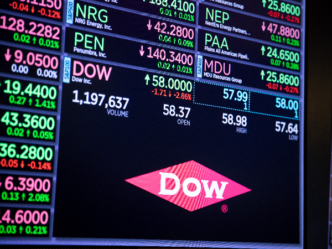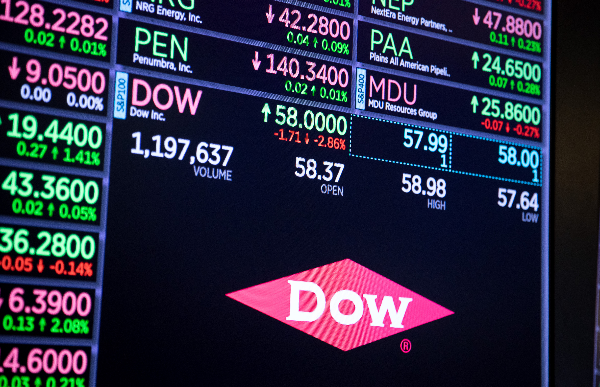A rare and severe technical failure at a major data-center facility triggered a sweeping blackout across some of the world’s most critical financial markets overnight, halting trading in U.S. futures and Treasury derivatives on the Chicago Mercantile Exchange (CME) and sending shockwaves through global liquidity pools. Only a narrow slice of European fixed-income markets—BrokerTec EU—remained operational as engineers scrambled to restore systems.
The unprecedented outage underscores the fragility of the digital infrastructure that underpins trillions of dollars of global financial transactions daily, raising renewed concerns about the systemic risks posed by concentrated technology dependencies and the vulnerability of market plumbing.
A Cooling System Breakdown Freezes the World’s Largest Derivatives Marketplace
CME Group confirmed to Fortune that the failure originated at CyrusOne, a major data-center operator whose facility hosts core CME matching engines. A cooling-system malfunction forced emergency shutdown protocols, triggering cascading disruptions across CME’s electronic trading environment.
“BrokerTec EU markets are open and trading. All other CME Group markets remain halted due to a data center cooling issue at CyrusOne,” CME told Fortune.
The outage hit virtually the entire suite of CME markets, including:
- U.S. Treasury futures
- Fed Funds, SOFR, and Eurodollar futures
- S&P 500, Nasdaq, and Dow index futures
- Agricultural, metals, and energy futures
- FX futures and options
Together, these products represent the backbone of global hedging, benchmark pricing, and risk management across equities, rates, commodities, and currencies.
Liquidity Vanishes: Markets Brace for Volatility on Reopen
The sudden blackout left traders without access to benchmark pricing tools during key Asian trading hours, forcing banks, hedge funds, and high-frequency trading firms to rely on secondary markets, OTC quotes, and fragmented liquidity sources.
Analysts warn the disruption could create:
- Wider bid–ask spreads
- Short-term price dislocations
- Delayed hedging activity
- Uncertainties in Treasury and equity index risk premia
Some dealers described the overnight period as “flying blind.”
“Without Treasury futures or S&P futures pricing, risk managers had no anchor for overnight market direction,” said one Asia-based macro trader. “We were operating on shadows rather than signals.”
A Stress Test for Market Infrastructure
The incident has reignited debate over single points of failure in financial market infrastructure.
Key concerns include:
- Heavy concentration of matching engines in a handful of data centers
- Increasing dependence on high-speed electronic trading
- Climate-related stresses on cooling systems (data centers worldwide have faced heat-related outages)
- Lack of redundant parallel facilities capable of handling full market loads instantly
While exchanges like CME maintain disaster recovery (DR) sites, switching full operations is not instantaneous—especially when the incident involves physical hardware stress rather than purely software malfunction.
Financial regulators in the U.S. and abroad have been urging major exchanges to increase resilience, redundancy, and contingency planning, especially as climate volatility puts greater strain on electrical and cooling systems.
BrokerTec EU Stands Alone Amid the Blackout
Notably, BrokerTec EU, the European platform for government bond trading owned by CME, continued to operate normally. This was because its infrastructure is hosted separately from the U.S.-based data center that failed.
The limited availability of European rates trading provided a narrow reference point for global market participants, though without CME’s U.S. Treasury futures, hedging flows remained severely compromised.
Market Reaction: Calm for Now, Anxiety Ahead
Despite the severity of the outage, immediate panic was limited, in part because:
- The blackout occurred outside peak U.S. hours
- Cash markets were closed
- Equity index futures were not providing misleading signals (they simply weren’t available)
However, traders expect a volatile reopening, especially if the downtime extends or if data comes back in waves rather than all at once.
“Once CME flips the switch back on, we could see a rush of pent-up positioning hit the screens,” said a derivatives strategist at a major investment bank. “Everyone is waiting to recalibrate.”
CME’s Response: Controlled Restart Underway
CME Group said teams at both CME and CyrusOne worked overnight to resolve the cooling malfunction and test system integrity before attempting a coordinated market restart. The exchange stressed that market integrity and data accuracytake precedence over speed.
Restoration timelines remain unclear, though CME has promised regular updates.
A Wake-Up Call for Global Finance
The scale of the disruption highlights a deeper issue: modern markets may be technologically advanced, but they are not invulnerable. A single point of failure—even a cooling pipe—can stall the complex machinery that prices global risk.
This incident will likely prompt:
- Renewed regulatory scrutiny from the CFTC, SEC, and European authorities
- Calls for geographic and infrastructural diversification of matching engines
- A reassessment of market-critical infrastructure risk
- Pressure on data-center operators to enhance environmental resilience
In an era of algorithmic trading and nanosecond execution, the outage serves as a stark reminder that the global financial system remains tethered to physical systems that are far more fragile than many assume.
A Global System Waiting for the Lights to Come Back On
As markets await CME’s full return online, traders, policymakers, and risk managers alike are watching closely for signs of stress, distortions, or reopening volatility.
Whether this becomes a footnote in market history or a turning point in how financial infrastructure is regulated will depend on what comes next—and how exchanges and data-center operators respond to the vulnerabilities exposed overnight.















